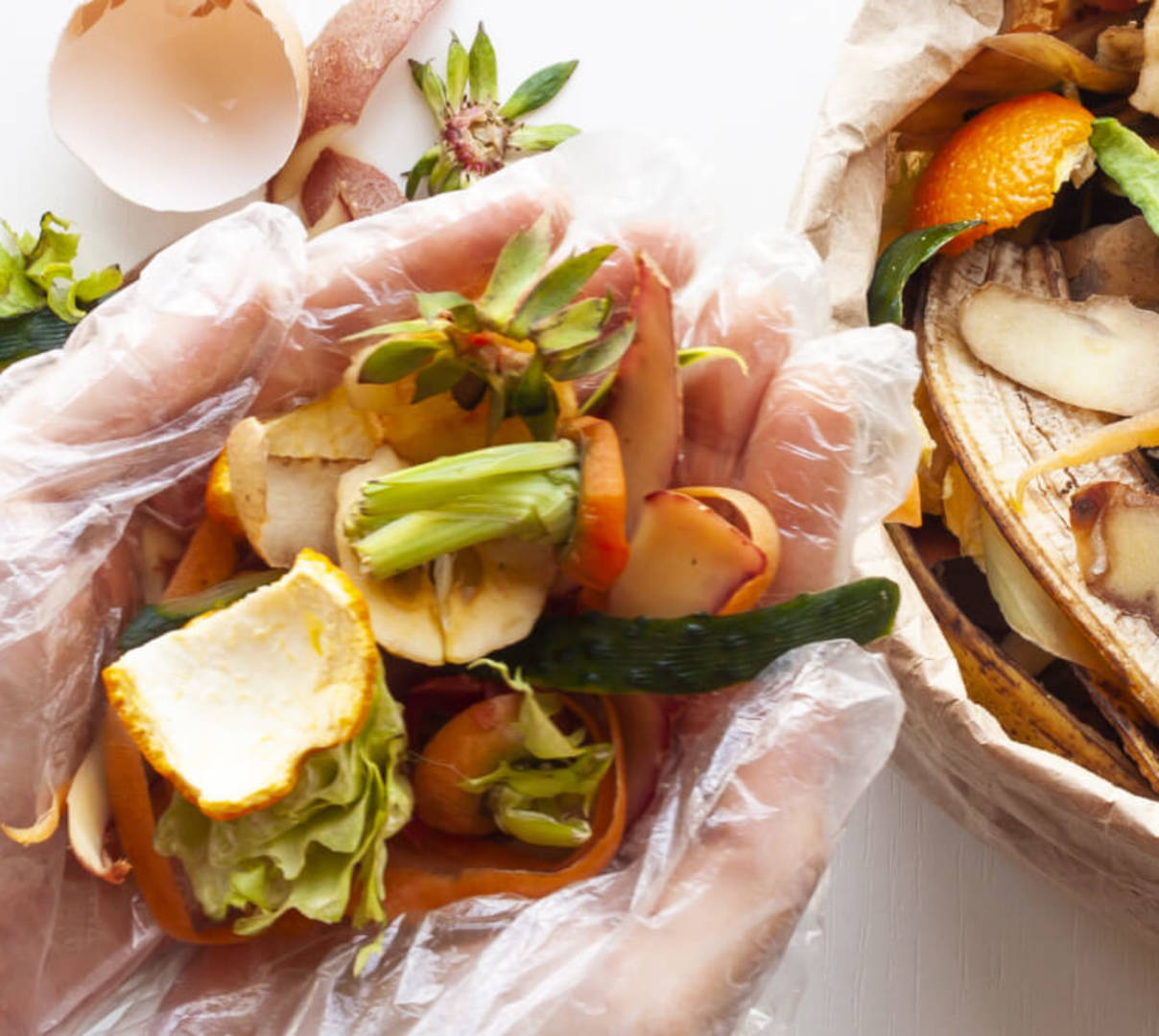Reducing food waste in restaurants has become an environmental, economic, and social priority. With the restaurant industry alone adding 17.09 million tons of food waste to landfills each year, operators are seeking ways to decrease the waste produced by restaurants to support their communities and underscore their mission-driven brands.
Whether due to over-ordering, over-prepping, or oversized portions, edible food is commonly thrown in landfills — meaning it will not only produce a significant amount of harmful methane gases, but all of the resources that went into growing, packaging, transporting, and cooking the food are wasted as well. Meanwhile, more than 35 million Americans experience low or very low food security, making impactful food waste solutions all the more important.
Benefits of reducing food waste in restaurants
Though there are many ways to make your restaurant more sustainable, focusing on reducing food waste will have a major impact. It not only helps the environment by sending less food to landfills, but also saves you money in the long run — studies have shown that restaurants that invest in reducing food waste save up to $7 for every $1 invested in the cause.
These investments also have the power to drive new business, as consumers want to support brands that share their values. Millennials and Gen Z consumers — who have significant purchasing power — are especially concerned about climate change, with 73% of millennials saying they would spend more for sustainable products. Accordingly, promoting sustainability initiatives in your marketing strategy can have a powerful payoff.
Some cities, like Nashville and Denver, are partnering directly with restaurant operators to reduce food waste in restaurants, while national efforts developed by both the Food Waste Reduction Alliance and the National Resources Defense Council seek to work with restaurant operators to develop strategies that reduce food waste while serving the community.
These initiatives are great resources, but there are many steps you can take on your own to reduce food waste in your restaurant. Here are a few ways to get started.
How restaurants can reduce food waste
Conduct a waste audit
For starters, it will help to know how much food waste your restaurant is producing to determine your best course of action. Your waste audit should begin with one simple goal, whether it's learning where the majority of waste is coming from (post-consumer or during prep) or finding the largest volume of waste.
The most informative — albeit messiest — way to get this data is to sort your weekly trash into three main categories: recyclables, compostables, food waste, and other. For more detailed data, you may opt to divide the food waste into pre-production waste (trimmings, etc.), post-production (plate waste), and spoiled, which can give you insights on where to make changes, from prep work to serving sizes. Each category should be weighed and logged so you can see where your biggest waste impact is.
By comparing these numbers with the amount of guests you're serving, you can get a clearer picture of what menu items can be reduced prep-wise, and how you can reconfigure your menu based on customer data. Here, it helps to pull from all data sources — including your reservation system, delivery platforms, and inventory logs — to create the most comprehensive and actionable data set possible.
Once your waste audit is complete, keep the momentum going by tracking and monitoring your inventory. Maintain accurate logs of the inventory you keep — and throw out — through either a dedicated software like Leanpath or manually with a spreadsheet. You can compare this data with your POS or DoorDash sales data to understand which items are selling. Armed with analytics, you'll be able to order more precise amounts of the ingredients you need while prepping less of the dishes that don't sell as well.
Donate leftover food
Due to increased food insecurity in the United States, lawmakers have passed policies that protect food donors from liability, as long as the food is donated in good faith. In fact, donating leftover food is encouraged by the EPA and restaurants may even qualify for tax deductions for their donations.
Luckily, you don't have to figure out the system on your own. Many charitable organizations can provide the resources and information you need to distribute donations and take advantage of the tax benefits, including:
Rescuing Leftover Cuisine: A nonprofit organization with branches in 16 cities across the US, dedicated to solving the food waste problem through consulting, donations, and tax credit assistance.
Local food banks: This tool from Feeding America can help you locate food banks in your area.
Local food rescue groups: This Sustainable America tool locates community-based, volunteer-run sites that accept food donations near you.
Find creative ways to use ingredients
What was yesterday's bread can become today's crouton or breadcrumbs. A good chef will know the best ways to use ingredients throughout the entire lifespan, incorporating them in many ways across a menu without becoming repetitive or bland. This can help ensure that large shipments of produce that may wilt quickly can be used before they go bad, giving you the most bang for your buck, and reducing food waste in the process. Download the DoorDash guide to creating a mouthwatering menu for more ideas.
Train your staff to reduce food waste
Your back-of-house team is your most powerful asset on the front lines of reducing restaurant waste. If you butcher meats in-house, teach your staff the proper techniques to utilize as much of the animal as possible, and save odd-sized portions for topping salads or adding to family meals. Bones and vegetable trimmings can be used in stocks and sauces, as well.
For the front-of-house team, make sure they understand portion sizes so they can give accurate recommendations when guests ask if they've ordered enough (or too much) food. You can also encourage servers to offer eco-friendly to-go packaging for guests' leftovers, as well as easy-to-follow instructions for reheating food at home.
Finally, encourage the entire staff to collaborate with each other. A lemon zested for dessert in the back can be juiced at the bar; milk that is about to expire can be used to make housemade ricotta. If you train your staff to approach the ingredients as if they've purchased them themselves, they may come up with innovative ways to use as much of the product as they can.
Run limited-time specials
Short-term specials are a great way to use up surplus ingredients — particularly seasonal produce or hard-to-find items like fresh white truffle. If your produce delivery includes a lot of sweet corn in the summer months when they hit their peak, work with your chef to develop a hard-to-resist special (creamy corn chowder, anyone?) that will entice customers to help you use up your supply while it's still fresh. The limited time frame and seasonality will make these specials and deals all the more appealing.
Elevate your family meal
If you have some duck confit hash leftover from weekly brunch or only a few servings left of a limited special at the end of the night, take the opportunity to serve it to your employees at the next day's family meal, or let them take it home. Your team will appreciate a hot meal after a long shift.
How to reduce waste from pickup and delivery operations
As food delivery continues to grow in popularity, restaurants are looking for ways to reduce waste in their off-premise menus and packaging.
Our Optimizing for Delivery and Pickup ebook has all the tools you need when starting out as a delivery partner; here are our top tips to boost sustainability in your pickup and delivery operations.
Track menu sales in DoorDash
DoorDash's Merchant Portal can help you understand which items are popular — and which aren't — so you can effectively manage your inventory. This sales data can also help you plan out your prep work, so you can maximize storage space and prep more of the items that customers crave.
Use eco-friendly food containers
Your packaging is an extension of your brand — it's what customers will see even before they see your food. Try using eco-friendly food containers that can be composted or recycled to minimize your restaurant's footprint — our favorites can be found in the DoorDash Store. Not sure which kind to get? Read our guide to sustainable food packaging.
Leave out plastic utensils and paper napkins
If your customers are ordering to their house or office, they likely don't need additional napkins or utensils. Add a $0 item to your menu allowing customers to opt out of these items, or let them know to leave a comment for you saying they're all set. Your customers will appreciate not being burdened with excess cutlery, and you can save supplies for those who actually need them.
By implementing the initiatives above and analyzing where you can minimize waste in your daily restaurant operations, you can save money, help people in need, and drive brand loyalty — thus attracting new customers who appreciate your positive community impact.





